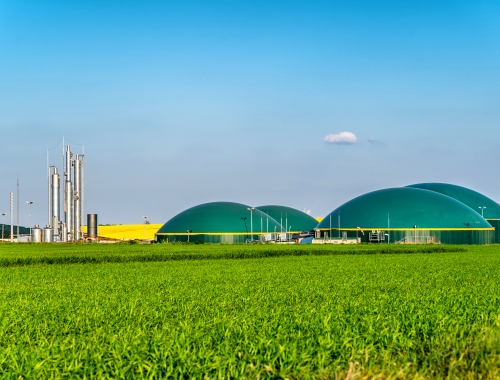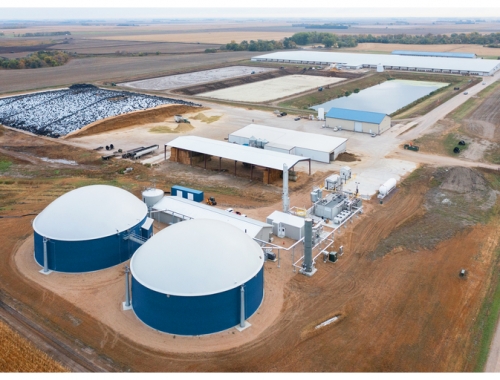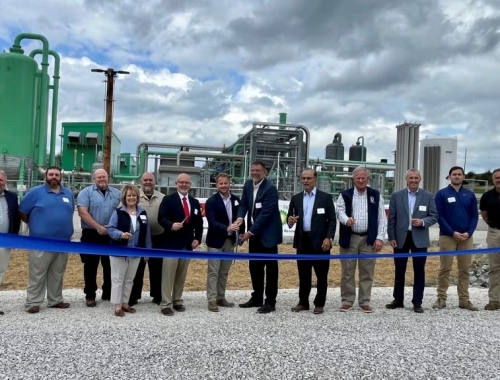Energy consumer group flags risk of forced electrification
SUMMARY
Consumers must be given a choice, Consumer Energy Alliance stresses.
By Joseph MurphyDecarbonising US heating will require an “exorbitant cost”, Consumer Energy Alliance (CEA) warns, calling on the government to have a more pragmatic approach to the challenge that protects consumer choice.
Around 59.5mn households in the US rely on natural gas for heat, and most homes also rely on the fuel for cooking. The cost of electrifying these systems would exceed $258bn, Michael Butler, mid-Atlantic director for CEA, tells Gas Pathways. And this is only when costs for electric furnaces, water heaters, cooking ranges and clothes dryers are considered.
“There is the overall price tag itself, and then there is the incredible income disparity that exists in the US,” Butler says. “Consumers don’t have those kinds of savings.”
He cites a CNBC study published in January 2022, which showed that 56% of Americans did not have the savings to cover $1,000 of emergency costs. While subsidies could cut the direct cost for consumers, they would end up paying for them through higher taxes, he says.
“We believe that if you let the consumer have the choice, and if we have multiple opportunities for energy sources that will keep costs down, then over time we’ll see the technological improvements, the efficiency gains that you need to reduce emissions,” Butler says. “An all-of-the-above energy strategy will be best for heating prices.”
Besides efficiency, Butler highlights the potential for carbon capture and storage to decarbonise energy systems, and believes it is good to have hydrogen as “an aspirational goal.” Restrictions on oil and gas leasing and obstacles to pipeline developments have meanwhile undermined efforts to keep energy affordable.
Maryland case study
A recent report by CEA also brought attention to the dangers of forced electrification of heating, estimating that in the state of Maryland it would result in households having to fork out nearly $26,000 to retrofit their existing applications.
In its 2030 Greenhouse Gas Emissions Reduction Action Plan, Maryland's environment department calls for the conversion of natural gas heating seasons to electric heat pumps, powered increasingly by renewables. But doing so "inflicts economic challenges on citizens during a time when they can least afford it," CEA said in a report titled The Hidden Costs of a Maryland Natural Gas Ban, published in January.
"Consumers need affordable, always-on options like natural gas to balance the grid and ensure they have the power and heat they need during extreme weather events and for daily service," CEA said. "This became evident when Texas faced power reliability challenges during the February 2021 freeze."
The consumer group said its report used open-source data to calculate how much an average Baltimore household would have to pay if natural gas service and usage were banned, estimating the sum at $26,884. This data includes information on consumer websites on average costs for replacing gas appliances, remodelling, construction, wiring and labour. Consumer website Homewyse, for instance, puts the cost of a new heat pump at between $4,177 and $5,239, but the cost rises to $20,000 or more after labour, fees and permits are taken into account. Then there are also other appliance replacement costs and the rewiring work to consider.
A "tremendous" amount of new transmission infrastructure would also need to be built to cope with the added power needs, CEA said.
"These energy bans dictate choices to consumers and supporters of these efforts ignore science and leave out pertinent facts - mainly how expensive it will be to force people to change all their appliances to electric-only," it said.
Maryland households are already struggling with rising energy bills and soaring inflation, the group continued, noting that 9% of the state's residents lived under the poverty line. A ban on gas would hit low-income households hardest, it said.
Today over 40% of Maryland homes use gas for winter heating, and the fuel's use over the past decade has saved households, small businesses and manufacturers over $4.6bn. This winter, homes using gas are expected to spend $746 on heating, while those relying on electricity will pay $1,268, the US Energy Information Administration (EIA) has forecast.
Meanwhile, Maryland's emissions have also fallen dramatically, as the share of gas has risen. Data from the Environmental Protection Agency estimates that the state's emissions of nitrogen oxides fell by 82% between 1990 and 2020, while emissions of volatile organic compounds fell by 76% and sulphur oxides by 97%. What is more, energy-related CO2 dropped over 21% between 2000 and 2018.
"These reductions came as natural gas use grew, pipeline infrastructure expanded, and Maryland's economy surged," CEA said. "Usually, economic growth and emissions increase in parallel."
CEA said it supported a "balanced and rational discussion by those who want to voluntarily pursue strategic electrification efforts that make sense from a practical or technical standpoint."
"However, prematurely instituting technologies comes at a cost, and a blanket adoption of forcing electrification onto consumers without examining the details could have very real cost and reliability impacts," the group said.








